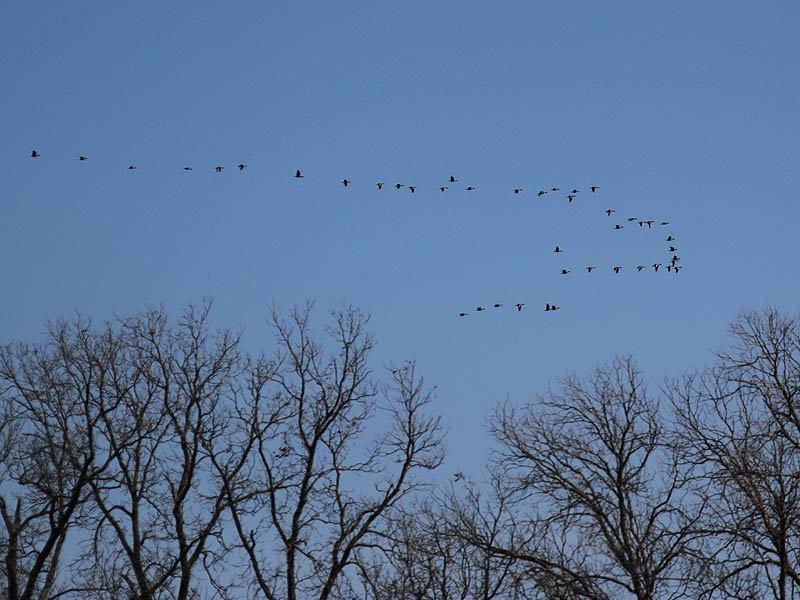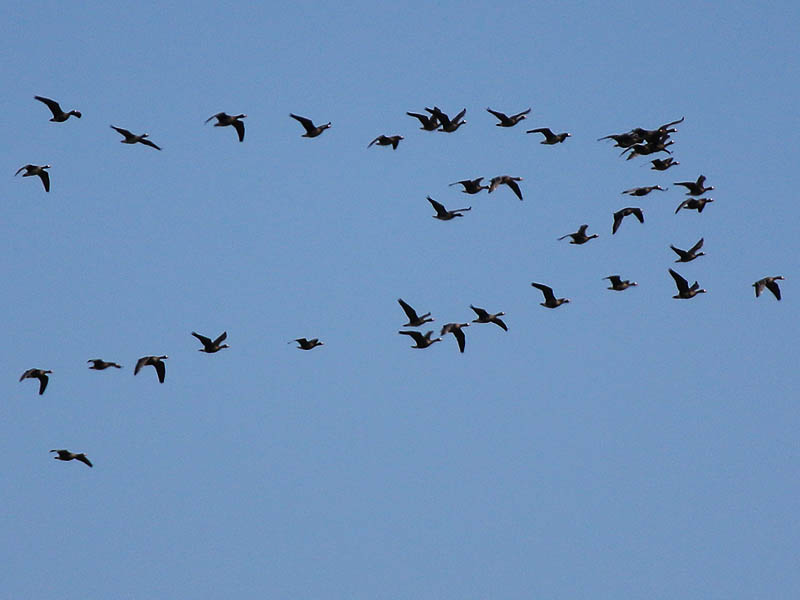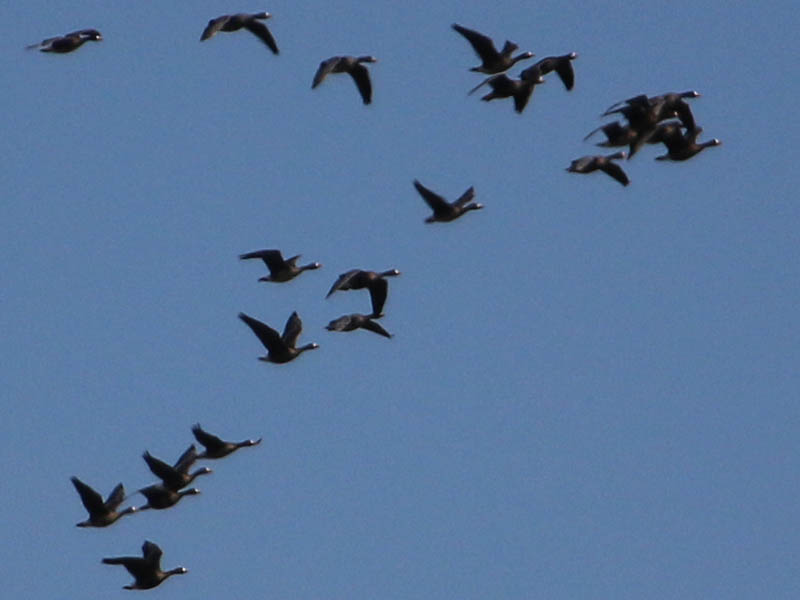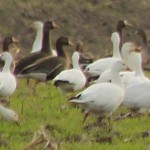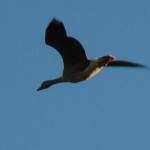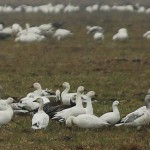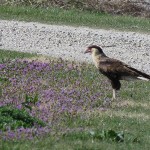These Greater White-fronted Geese were observed as they flew over the John Bunker Sands Wetland Center in Seagoville, Texas.
These birds are not often seen in the more urban areas of the metroplex. A trip to the rural fringes is required to find them in large numbers.
The birds in this flock were last seen sinking below a distance tree line where they likely were congregating on a farmers field. Last year we observed dozens of these geese on the ground mixing with a similarly large number of Snow and Ross’s Geese. This is the first time I have seen a flock of exclusively Greater White-fronted Geese.
Wikipedia has this to say about the Greater White-fronted Goose:
The Greater White-fronted Goose is divided into five subspecies. The nominate subspecies A. a. albifrons breeds in the far north of Europe and Asia, and winters further south and west in Europe.
Three other restricted-range races occur in northern North America: A. a. gambeli in interior northwest Canada, and wintering on the coast of the Gulf of Mexico, slightly larger than the nominate form, Pacific White-fronted Goose, A. a. frontalis and Tule Goose, A. a. elgasi, in southwest Alaska, largest and longest-billed of all, both wintering in California. All these races are similar in plumage, differing only in size.
Finally, the very distinct Greenland White-fronted Goose, A. a. flavirostris, breeding in western Greenland, is much darker overall, with only a very narrow white tip to the tail (broader on the other races), more black barring on its belly, and usually has an orange (not pink) bill. It winters in Ireland and western Scotland.
Birds breeding in the far east of Siberia east to Arctic Canada, wintering in the United States and Japan, have been described as A. a. frontalis on the basis of their slightly larger size and a marginally longer bill. Another putative East Asian subspecies albicans has also been described. A 2012 study has found that frontalis and albicans do not merit subspecies status, the former being synonymised with gambelli and the latter with the nominate subspecies; this study found that these forms had been named on the wintering grounds from specimens whose breeding grounds were unknown.
Recent ecological studies suggest the Greenland birds should probably be considered a separate species from A. albifrons. Of particular interest is its unusually long period of parental care and association, which may last several years and can include grandparenting, possibly uniquely among the Anseriformes.
